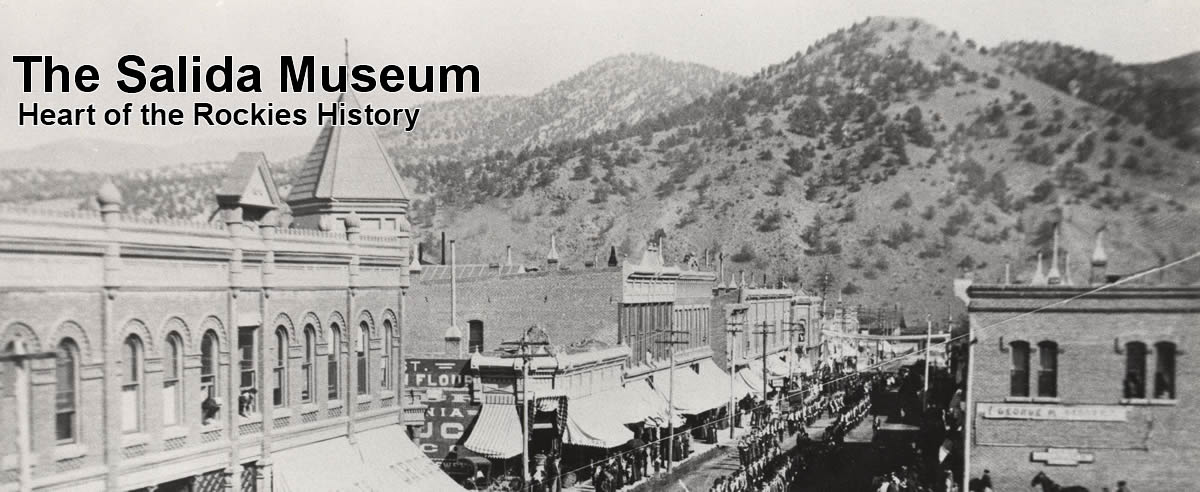The City of Salida, later called the “Heart of the Rockies” by one of Salida’s notorious characters, lies in the headwaters of the Arkansas River valley along the east slope of the Continental Divide. Like many communities in Colorado, the city sprang up quickly with the coming of the Denver & Rio Grande Railroad, which ran trains to the mines and hoped to be first over the mountains with a through connection to the West Coast. Advancing from the east through the Royal Gorge, the tracks reached here in 1880.
Salida prospered as rail traffic developed in four directions: east to Denver, north and west to Leadville and Salt Lake City, west to Gunnison over Marshall Pass and south to Alamosa over Poncha Pass. The county seat had been moved from Granite at the north end of Chaffee County to the town of Buena Vista in the middle. However, Salida became the largest city in Chaffee County and voters approved moving the county seat to Salida in 1928. As riches flowed from the mines, sightseers discovered they could traverse America’s highest mountains in style aboard elegant rail cars. No longer a barrier, the mountains became an irresistible source of wonder, recreation and restored health. Though highways have overtaken the rails that once replaced the Indian paths and early stagecoach roads, the mountains continue to deliver on their promise of outdoor fun and adventure.
The Salida Museum contains Indian artifacts, household furnishings, art, photographs, mineral specimens and tools associated with railroading, mining, farming and ranching. The museum collection, first displayed in 1954, was started by Mrs. Harriet Alexander, Salida’s first councilwoman, and Mrs. Byrd Raikes Fuqua, proprietress of Byrd Colony dude ranch, which began in 1925 and operated for many years in the Chalk Creek area of Mount Princeton. When Mrs. Alexander died in 1971, money left in her will was used to build the present two-room museum building, which opened its doors in 1976.
